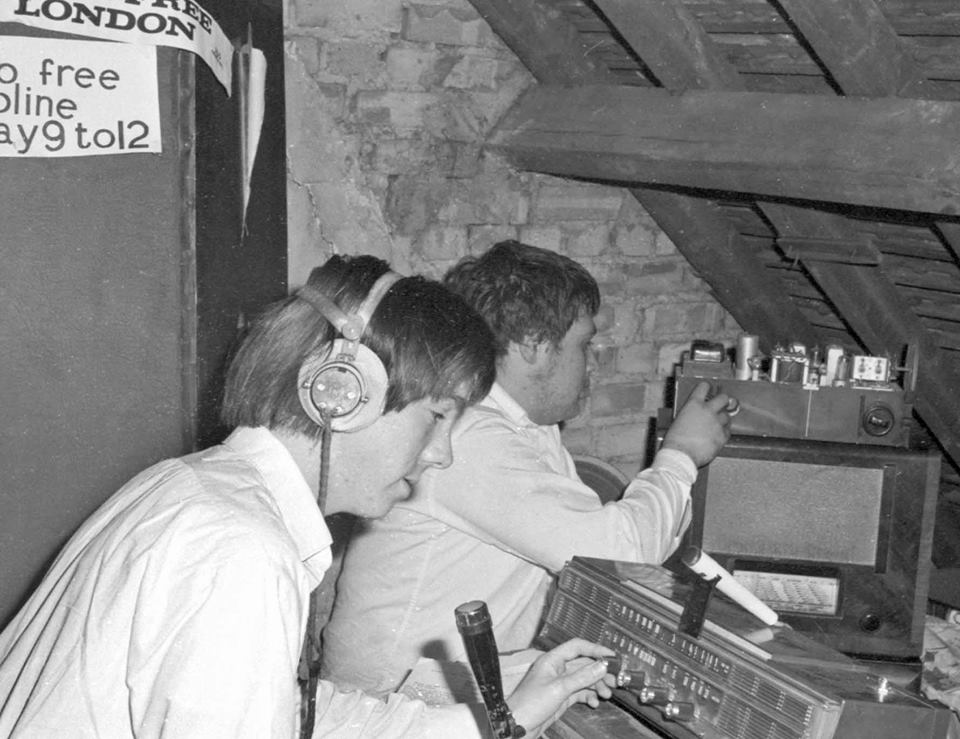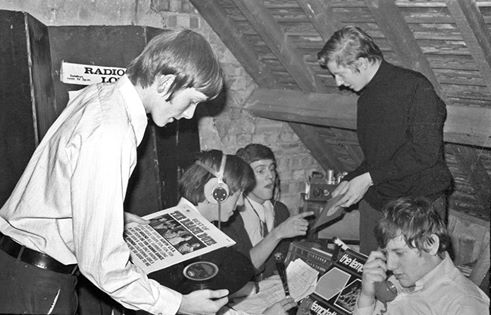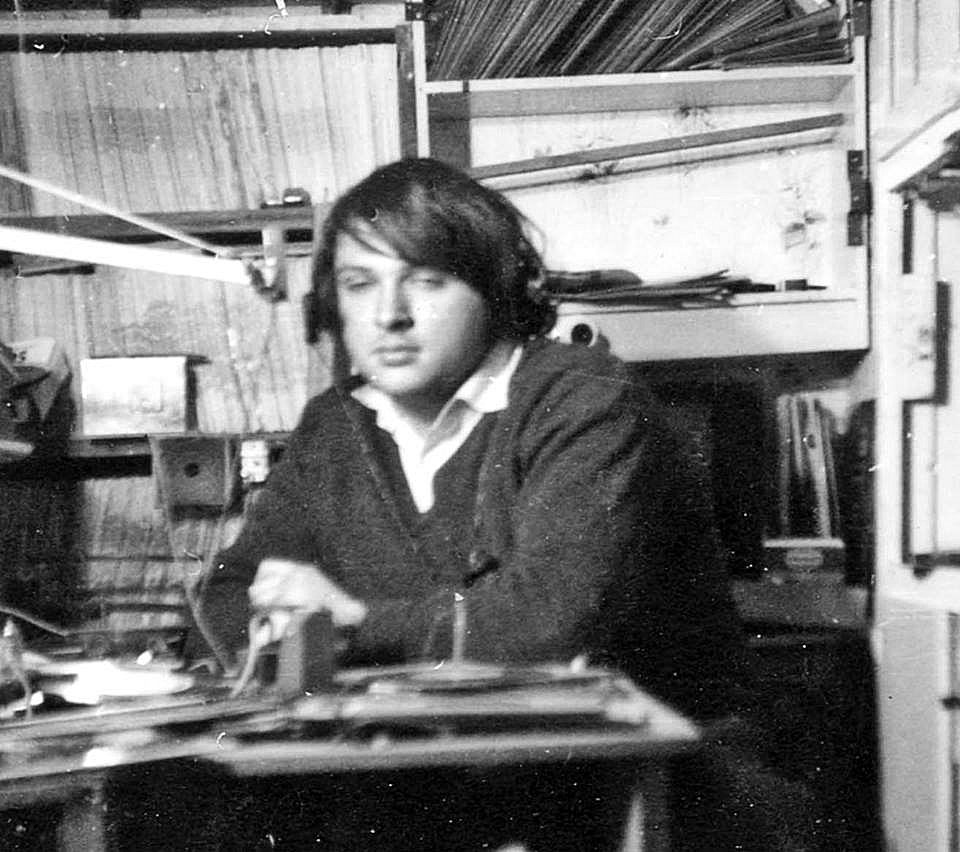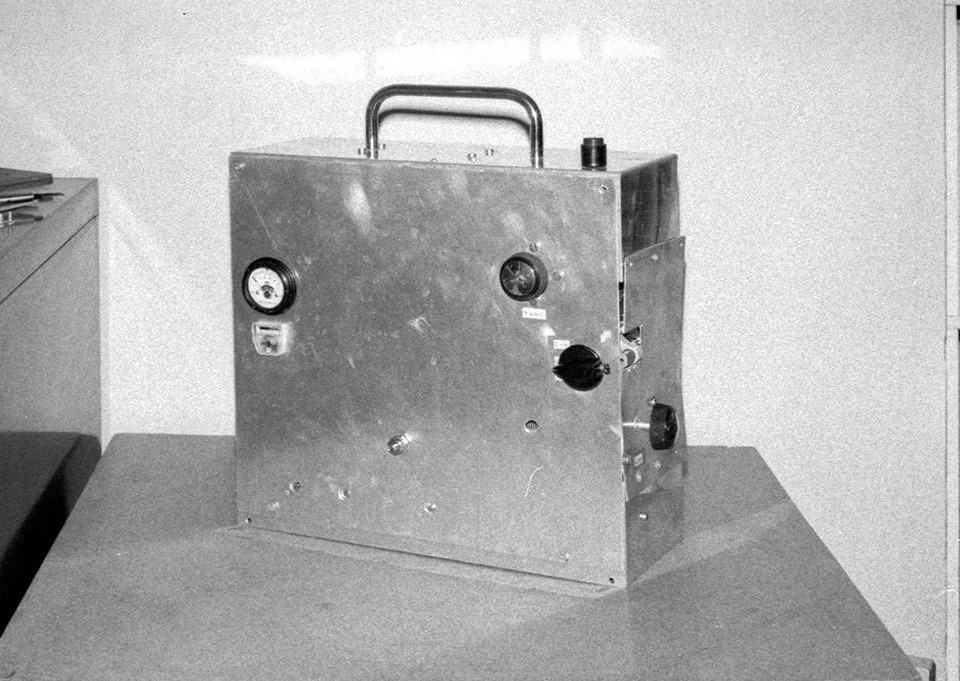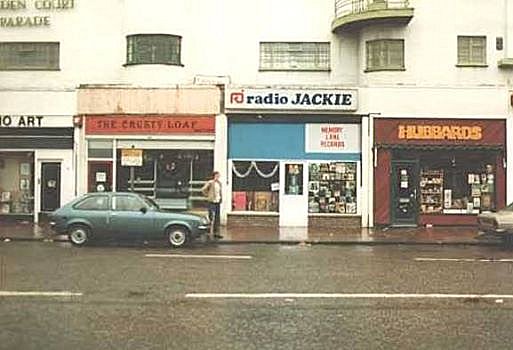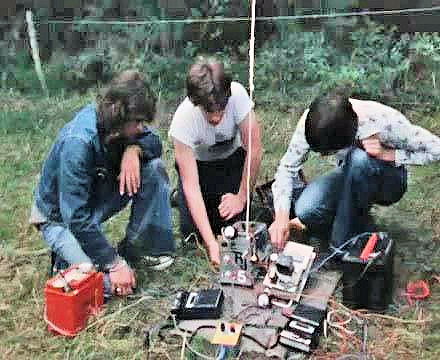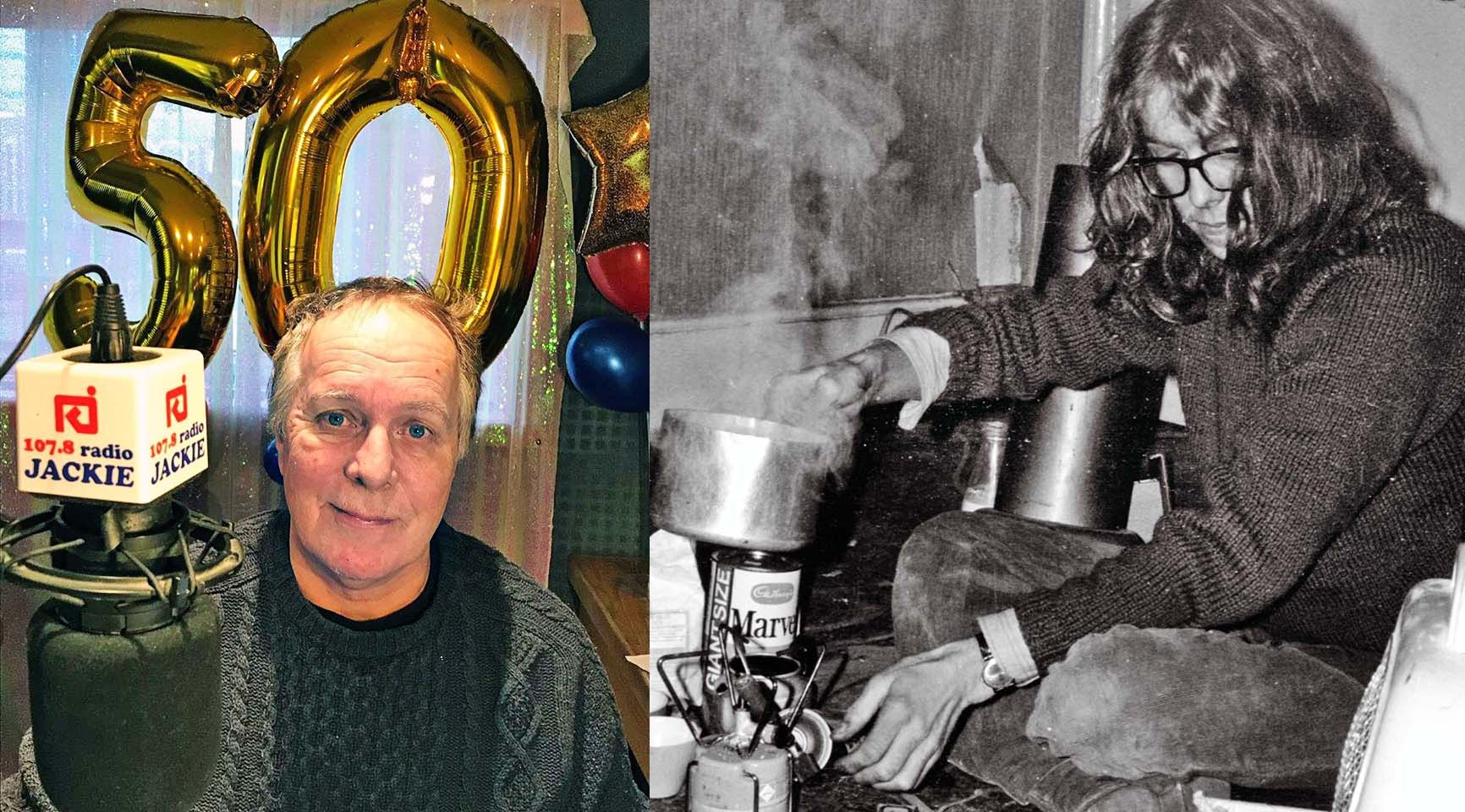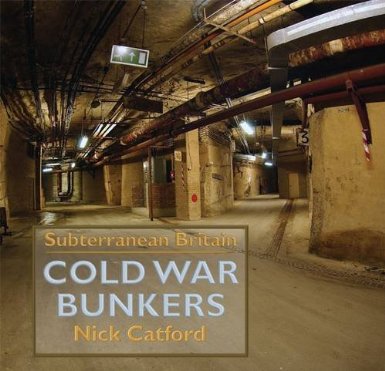Radio Jackie – Nick Catford
Years of involvement 1969-1970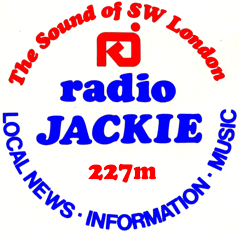 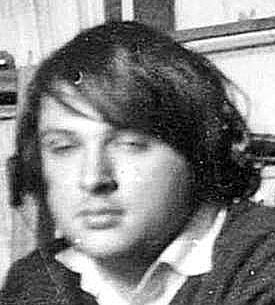 |
| Home Location: Sutton, Surrey – DJ Mike Knight |
| Types of involvement: Engineering reports from London & Technical advice |
| Comment / History:- |
| Nick was introduced to Radio Kaleidoscope through Buster in 1969 as somebody who was about to start a new radio station. Nick also provided signal reports during Radio Kaleidoscope broadcasts from Essex.Nick went on to successfully start up and run Radio Jackie along with his father a former DFC Lancaster rear gunner Jack Catford.See also http://radio.eric.tripod.com/radio_jackie.htm
Nicks own words Radio Jackie made its first test broadcast from my house on Wednesday 19th March 1969 on 194 metres during the evening. The planning for the station started the previous summer when I attended a rally in Trafalgar Square organised by the Free Radio Association. There is a short film of the event on youtube https://www.youtube.com/watch?v=kKG_8xgFvpA On the day of the rally a pirate station called Radio Free London was on the air in London broadcasting to the people attending the rally. I went to the rally with a school mate Roger Allen. We heard Radio Free London and thought it would be a good idea to set up our own pirate station. To do that we needed staff/djs, a studio and most important a transmitter. I quickly recruited another school friend, Chris Low. My mum was in the local butcher one day and mentioned our plans to one of the people working in the shop, Norman Thompson. Norman was keen to get involved and he knew of two more people who would join the new station, David Squires and Doug Russell. We had our crew. I became Mike Knight, Roger used a number of names including Duncan Caesar and Dirk Swift, Chris Low became Martin Fox, Doug Russell became Tony Simms and Norman became Eddie Lloyd. Not sure about David Squires because he left us before Jackie actually got on the air. I am not sure if that is his real name or the name he was planning to use. It was going to be many months before we got a studio together and got hold of our first transmitter. Here is a picture of all of us together in my loft in 1968. It wasn’t actually a studio at this time. Just a couple of microphones, a couple of radios, a telephone and some records. To us it was progress. Radio Jackie was on its way. We see from left to right Chris Low, Doug Russell, David Squires, Roger Allen and Norman Thompson. I am of course behind the camera. Click on picture to enlarge Two more pictures from that gathering in my loft in 1968. Two of our prospective DJs in front of a microphone for the first time. On the left is Roger Allen and on the right Doug Russell. Having got our staff the next thing we needed to do was get a transmitter – easier said than done. None of us had any technical knowledge so we weren’t able to build our own. I knew of government surplus shops that sold all manner of old transmitters. Doug drove us up to a surplus warehouse at Codicote in Hertfordshire were we spent £15 on some kind of VHF transmitter. Even if we could have got it working it would have been useless as we wanted to broadcast on medium wave. I think we were clutching at straws when we bought if – a total waste of money. Another pirate at that time was called Radio Apollo. They gave out an address so I wrote to them and asked if they could build a transmitter for us. I got a phone call from Roger Scott who ran Apollo and we went over to see him in Ewell. He said he would be happy to build a transmitter for us. He gave us a list of components which he said could all be obtained from component shops in Edgware Road and Lisle Street in London. A couple of us went up on the tube and bought all the parts with the exception of the crystal which determines the broadcast frequency. We wanted to broadcast on 197 metres (1525 kHz) but were unable to get a crystal. Eventually a 194 crystal was found at Southern Surplus in Kingston. It was close to the wavelength we wanted so we decided it would do for the time being. The parts were delivered to Roger together with a stripped down radio chassis to build it on. The first Radio Jackie medium wave transmitter was ready for collection a week later and within days we made our first test transmission on 194. David Squires had left by then but we were soon joined by Ian Temple (Mike Hayes) and Howard Smith (Ian West) who joined us from Radio Helen North. I can’t remember if Ian came along before our first test or very soon afterwards..
 Early Radio Jackie Car Sticker – 1970’s Radio Jackie – Home brew 50 Watt MW Transmitter – 1973 (Courtesy Nick Catford) 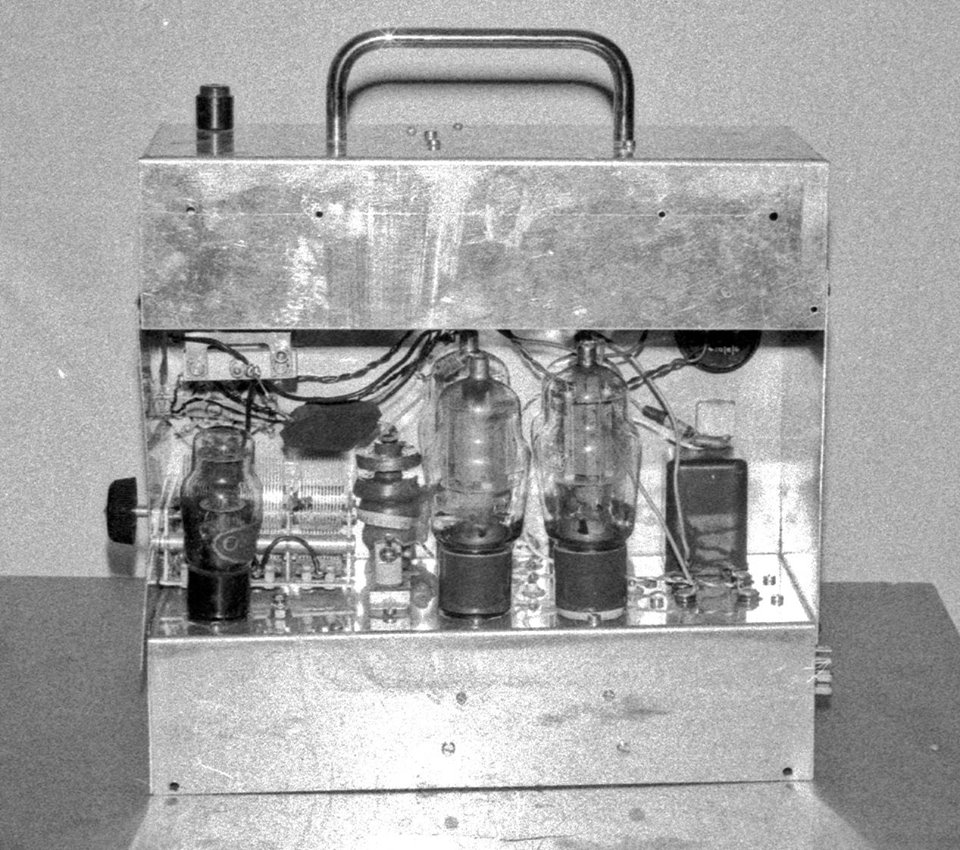 Radio Jackie – 100 Watt Portable MW Transmitter internal view – Notice the twin 807 PA valves – 1973 (Courtesy Nick Catford) 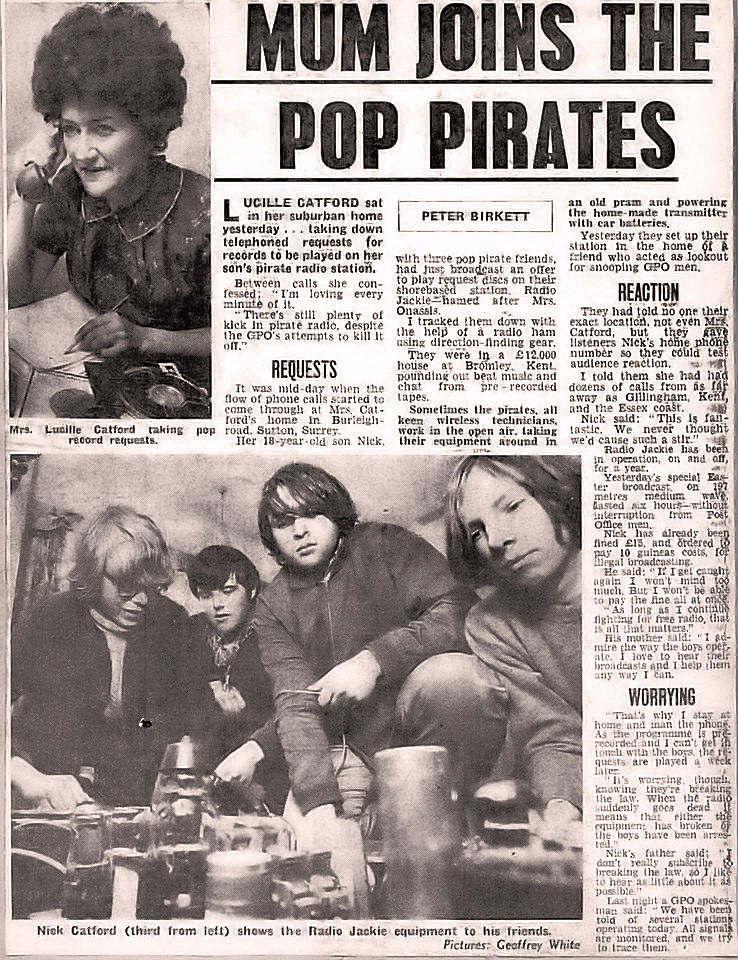 Old Press article posted by Nick, showing the great support from his family & friends during the early days of Radio Jackie 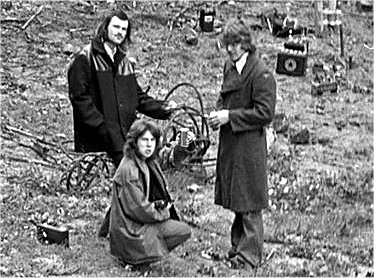 Radio Kaleidoscope II Left Steve Hampshire, Pat Mounteny (Edison), Dave Wright (Owen) – Sutton 1975 (Courtesy Nick Catford)  Radio Jackie founder Nick Catford alias DJ Mike Night in the studio – A great view of an early home brew audio mixer with rotary controls. CLICK Here and listen to Radio Caroline, Sunshine Radio and Radio Jackie – 1980
Our understanding is that Nick moved onto another fascinating project involving subterranean tours of our most secret bunkers and facilities.
Isbn: 9780956440570 Published May 2013 For the last thirty years Trench & Hillman’s London Under London has remained the unsurpassed authority on subterranean London but today it seems distinctly dated and, in many instances, factually incorrect. In more recent years a number of other books have been published on the same subject but, sadly, most have been thoroughly disappointing. Anthony Clayton’s Subterranean City (2010) was perhaps the best of the bunch, but focusses too much on the reasons why the capital’s underground infrastructure was created and is rather light on descriptions (or illustrations) of the city’s varied underground architecture. Of the others, Peter Ackroyd’s London Under, launched in 2012 with so much anticipation and acclaim, has been variously described by the critics as thin, uninspiring, dumbed-down and ‘written in a hurry with little enthusiasm’. Similarly Alan Brooke’s little 48-page book Under London, published in 2012, and Stephen Smith’s lightweight, vague and journalistic Underground London: Travels Beneath the City Streets of 2005, have met with generally negative reviews from both the press and the general reading public. Nor has Fiona Rule’s London’s Labyrinth, published in 2012, been particularly well received, particularly when compared with her truly excellent earlier works on London, The Worst Street In London and London’s Docklands. The downfall with all these books, apart from their often woolly texts, is the paucity of adequate illustrations – both photographs and location plans – which are essential in this visual age, particularly where the sites described are not generally open to public view. And it is here that Nick Catford, in collaboration with Folly Books, continues to excel with the recent publication of his new title Secret Underground London. This is the third book that Nick has done with Folly Books and is arguably the best so far. Produced in the same 250 x 250mm format as his earlier Cold War Bunkers and Burlington: the Government War Headquarters at Corsham, Secret Underground London extends to 282 pages (the earlier titles were only 224 pages) , and is packed with an astonishing collection of well in excess of 400 photographs, almost all in colour, and some fifty beautifully produced plans and drawings especially prepared by Folly Books editorial staff or by Sub Brit’s Tim Robinson. Just about every aspect of underground London is encompassed by this book with the exception of the city’s underground rivers which, as the author states in the introduction, are distinctly un-photogenic and are anyway already comprehensively dealt with in Paul Tilling’s London’s Lost Rivers. Similarly the Victorian sewage system, which has figured largely in many earlier publications, is only described in outline although one particularly unusual feature, the Abbey Mills pumping station and its underground boilerhouse and coal vaults, has a chapter to itself. Seventy-five pages are dedicated to disused tube station with stunning contemporary photo’s which beautifully complement the earlier, archive photographs seen in J.E. Connor’s excellent books on the subject. A further fifty-five pages illustrate other, less well-known subterranean railway locations, including what is probably the first authoritative account of the Camden Horse Tunnels and beer vaults. Twenty-five pages of photographs illustrate the Deep Level Tube Shelters while two further chapters cover other air-raid shelters, large and small. Almost half the book is dedicated to the sinister collection of Second World War and Cold War control centres and other secret government bunkers which lurk beneath the city streets, to virtually all of which – somewhat surprisingly – Nick has been allowed access in order to produce this truly astonishing photographic record. There is much else too, from cemetery catacombs to the Thames Barrier service tunnels, which space doesn’t allow for inclusion in this review, but mention must be made of the extensive chapter on the Surrey Stone Quarries. The ramified network of long-abandoned quarry workings in the Godstone, Chaldon and Merstham areas are little known outside a select few explorers and local historians and the stunning selection of photographs included here will perhaps be something of an eye-opener to many readers. The quarry at Godstone has plates from the former Croydon Merstham & Godstone Railway still in situ. They have a double relevance to London, for not only are they underground within the geographical boundary set for this book, but they also provided the stone from which much of early London was built. Secret Underground London can be ordered from the author at £24.99 plus £2.75 postage (signed on request). Send cheques to Nick Catford, 13 Highcroft Cottages, London Road, Swanley, Kent, BR8 8DB or pay by Pay Pal (£25.99 includes Pay Pal fee + £2.75 posatage) to nick@catford.info Overseas postage rates available on request.
|

